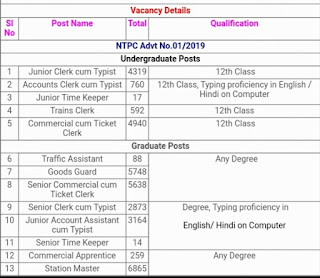Indian History :The Mughal Dynasty (1526-1540 and 1555-1857)
Extent-Stretched from Punjab to Bengal, including Jaunpur and Bihar, in the 16th century. Included Kabul in the north-west, Kashmir in the north; Sindhi, Multan, Ajmer, Gujarat in the west. Malwa and banner in the south; and Orissa and Bengal in the east at the time of Akbar’s death. Stretched from Kabul Kandhar and Peshawar in the north of Kaveri in the south by the end of the 17th century.
Important Rulers of Mughal Dynasty:
One of the most important dynasties of India is Mughal dynasty. Which reigned almost continuously from AD 1526-1857.
Babur (1526-1530)
# Is said to have founded the Mughal empire. He defeated Ibrahim Lodhi in the first battle of Panipat on 20 April 1526and became emperor of Delhi.
# In 1527, he defeated Rana Sanga at Khanwa a near fathepur Sikri and occupied Agra. In 1527, in the battle og Gorge, he defeated the Afghans and thus, became the master of the entire India.
# He wrote his autobiography, Tuzuk-I-Babri in which he gives an excellent account of India and his empire.
# He died in 1530.
Humayun (1530-1540)
# He was the son of Babur and ascended the throne in 1530, his succession was challenged by his brothers Kamran, hindal and Askari along with the Afgans.
# He fought two battles against Sher Shah at Chausa (1539) and at Kannauj (1560) and was completely defeated by his enemies.
# He escaped to Persia, where he passed 12 years of his life in exile.
# After Sher Shah death, he invaded India in 1555 and defeated his brothers and the Afghans. He once again became the ruler of India.
# He died in an accident in 1556, just two years after he regained his kingdom.
Sher Shah Suri (1540-1545)
# An Afghan who ruled the country for a brief period from 1540-1545 after defeating Humayun.
# His empire extended from the Brahmaputra in the east to the Indus in the west,
from the Himalyans in the north to the Narmada in the south.
# During his reign of five years, he introduced a brilliant administration, land revenue policy and Serval other measure to improve economic conditions of his subject.
# He issued the coin called “Rupia”and fixed standard weights and measures all over the empire. He also improved communication by building several highways. He built the grand trunk road, that runs from Peshwar to Calcutta.
# He also introduces military reforms; he recruited and paid the soldiers directly and every soldier had his share recorded and his horse branded with the imperial sign.
Akbar (1556-1605)
# The Eldest son of Humayun. He ascended the throne at the young age 13 on 14
February 1556 and his tutor Bairam Khan was appointed as the regent.
# The most successfully Mughal emperors. An excellent leader, who separated religion and politics, started a new religion called Din-e-IIahi.
Jahangir (1605-1627)
# Salim, son of Akbar, came to the throne after Akbar’s death in AD 1605. He is
known for his strict administration of justice.
# In May 1611 Jahangir married Mira-un-Nisa, widow of Sher Afgan, a Persian nobleman of Bengal. Later on, she was given the title ‘Nur Jahan’.
# Nur Jahan took an active interest in the matters of the state and also ruled the empire when Jahangir was ill for a long time. Jehagir issued coins jointly in Nur Jahan’s named and his own.
# Relation with Foreginer: In 1608, Captain William Hawkins, a representative of the East India Company came to Jehangir’s court. In 1615, Sir Thomas Roe, an Ambassador of King James of England also came to his court. Though initially Jehangir resisted, he later on granting permission to the English to establish a trading post at Surat.
# Revolts: Guru Arjan Dev was martyred during his period, thus alienating the Skih Community.
Aurangezeb (1659-1707)
# After imprisoning Shahjahan, his son Aurangzeb was crowned in Delhi under
the title Alamgir.
# He ruled for 50 years till his death in February,1707 in Ahmednagar.
# The extent of the Empire: Aurangzeb’s empire extended from Kashmir in the north to Jinji in the south, and the Hindu-Kush in the west of Chittagong in the east.
# During this period, the Marathas, under Shivaji, rose to power and were a force to reckon with. The Execution of Sambhaji in 1689 saw the collapse of the Maratha empire.
# Aurangzeb’s empire now extended, but in certain parts of south India, he was not entirely successful in thwarting the enemies.
# Aurangzeb never returned to the north and died in Ahmednagar in February, 1707.
# Sikh Revolt: Aurangzeb captured Guru Teg Bahadur, the 9th Guru of Sikhs in 1675 executed him when he refused to embrace Islam. Guru Gobind Sing, son of Guru Teg Bahadur, organized his followers into a militant force called “Khalsa” to avenge the murder of his father. Guru Gobind Singh continued the war was against Mughalas but he too was put to death.
Decline of the Mughal Empire:
After Aurangezeb, the Mughal empire rapidly declined. Important causes for the decline were:
# Aurganzeb’s Rajput, Deccan and religious policies;
# Stagnation in agriculture production, trade and manufacture;
# Rapidly rising demands of the ruling classes, leading to attempts to realize more form Jagirs, causing peasant and Zamindari discontent.
# Jagirdari crisis: Nobel tried to corner the most profitable Jagirs, leading to corruption;
# Factionalism among nobility after Aurganzeb;development to powerful Irani, Turani, Deccani, Hindustani blocs in the court who vied for power in order to destabilize the central
administrative machinery;
# Rise of independent kingdoms;
# Rise of European power in India;
# Nadir shah’s invasion in 1739;
Third Battle of Panipat
The third battle of Panipat fought between Ahemd Shah Abdali and Marathas, ended Maratha Power.

Comments
Post a Comment